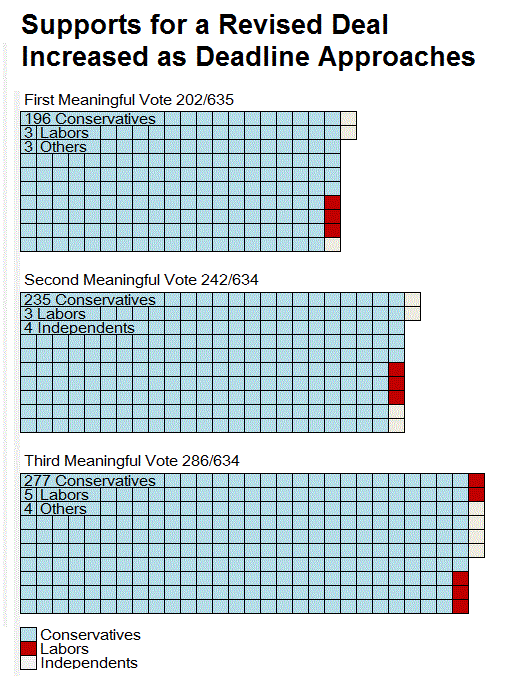UK’s new Prime Minister Boris Johnson has about 3 months to deliver Brexit. With the EU reiterating refusal to amend the Withdrawal Agreement (the deal), Johnson should face the same challenge as his predecessor, Theresa May. We continue to expect Brexit with a deal, as the composition of the parliament has not changed, despite the change of the PM. As the majority still seeks to avert leaving the EU with no deal, they might do so via pushing a general election. Meanwhile, those in the Brexit camp might opt to accept a tweaked deal in order to ensure Brexit could materialize. Nonetheless, Johnson’s hardliner rhetoric has inevitably increased the chance of a no deal Brexit.
Although Johnson has suggested that the country should “prepare robustly” for a no deal Brexit, the majority in the Parliament would still seek to avoid this from happening. Chancellor Philip Hammond threatened that he would resign if Johnson becomes the PM, in opposition to his no deal Brexit approach. The parliament could trigger a general election by passing a “no confidence” motion. Yet, Johnson might try to prevent an election from happening before Brexit. A YouGov poll shows that around 51% of Conservative voters at the 2017 election would vote for Conservatives at an election, IF Brexit is completed by then. Indeed, the support has dropped sharply from the last election, although support for Labors is even worse. The poll suggests that less than half of 2017 Labour voters said they would vote for the party again in a post-Brexit election.
How Johnson can prevent an early election from happening is to avoid a no deal Brexit. The question then returns to how to make a deal. The stickiest point of the deal is Irish border backstop solution. The EU has ruled out removing, and setting a time limit to, Irish backstop. However, these are deemed unacceptable to many in the parliament. On the contrary, the EU might agree to revise the non-binding political declaration or extend the transition period until a new Irish border solution is found. We expect, as time passes, some of the MPs would eventually surrender and accept some tweaks in the deal. All is driven by political calculations. If they don’t support a revised deal, opposition MPs could urge to an election to avert ‘no deal’. This could make the Brexiteers accept a tweaked deal. This indeed happened in the third meaningful vote taken place on March 29. Although the deal was rejected, 286 out of 634 MPs voted for the motion, compared with 202 and 242 in the first and second meaningful votes respectively. Note that Johnson was one of those who voted for May’s deal in the third meaningful vote.
Leaving the EU with a deal remains our base scenario. As the majority of the parliament still seeks to avert leaving the EU with no deal, they might do so via pushing a general election. Meanwhile, those in the Brexit camp might be “forced” to accept a revised deal (though not ideal to them) in order to secure Brexit. Yet, even in the case of Brexit with a deal, further extension of Article 50 beyond October 31 is needed in order to get the bill passed in both Houses of the Parliament. Nonetheless, Johnson’s hardliner rhetoric has inevitably increased the chance of a no deal Brexit.
| Key Dates | |
| Jul 23 | Boris Johnson elected as new PM |
| Jul 25 | Parliament recess begins |
| Sep 3 | Parliament returns |
| Sep 14 | Lib Dem conference |
| Sep 21 | Labors conference |
| Sep 29 | Conservatives conference |
| Oct 2 | PM’s speech to Conservatives |
| Oct 17-18 | EU Council meeting |
| Oct 31 | Brexit deadline |














